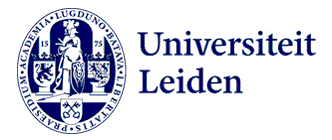Potensi Bentonite Clay Dan Karbon Aktif Sebagai Aflatoksin Binders Berdasarkan Gambaran Imunologis Dan Histopatologis Pada Ayam Buras
Effects of Bentonite Clay and Activated Charcoal as Aflatoxin Binders based on the Immunological and Histopathological Changes in Kampung Chicken
DOI:
https://doi.org/10.46549/jipvet.v10i1.94Keywords:
activated charcoal, aflatoxin, bentonite clay, chicken, histopathological, immunologicalAbstract
Aflatoxin is a toxic compound from the fungus A. flavus which can cause a decrease in chicken productivity. This study aims to evaluate the effect of bentonite clay and activated charcoal in chicken feed as aflatoxin binders based on histopathological and immunological features in chickens. A total of 60 chickens were randomly divided into 4 groups (G0, G1, G2, and G3) each group consisted of 15 chickens. G0 as a control without the addition of aflatoxin to the feed. Groups G1, G2, and G3’s feed were added with 106 ppb of aflatoxin. G2 was treated with 5g/kg bentonite clay, G3 was treated with 5g/kg activated charcoal. Chickens were vaccinated with Newcastle Disease (ND) on day 5. On days 14 and 28 serum was collected from the specimens for titer antibody testing. At the end of the study the chickens were dissected, the liver was taken for a histopathological test. The results of the aflatoxin level in the G0, G1, G2, and G3 groups were 10.5, 106, 19.1, and 23.95 ppb, respectively. Microscopic changes show the negative effects of aflatoxin on the liver organ. Group G0 did not show any histopathological changes, Group G2 and G3 showed several mild histopathological changes, whereas group G1 was the most severe. The antibody titers against Newcastle Disease (ND) of 4-weeks old chickens in G0, G1, G2, and G3 were 64, 4, 32, 32 HI units, respectively. The G0 treatment group has a protective titer against ND disease. Group G1 has the lowest (non-protective) ND antibody titer. Whereas the G2 and G3 groups both have protective titers against ND disease. Based on this study it was concluded that the administration of bentonite clay and activated charcoal was able to produce better immunological and histopathological features than the control group.
Downloads
References
Avantaggiato G., Havenaar R., dan Visconti A. 2004. Evaluation of the intestinal absorption of deoxynivalenol and nivalenol by an in vitro gastrointestinal model, and the binding efficacy of activated carbon and other adsorbent materials. Food Chem Toxicol. 42:817-824.
Avantaggiato G., Havenaar R., dan Visconti A. 2007. Assessment of the multi-mycotoxin-binding efficacy of a carbon/aluminosilicate-based product in an in vitro gastrointestinal model. J Agric Food Chem. 55:4810- 4819.
Bahri, S., Maryam, R., dan Widiastuti, R. 2005. Cemaran aflatoksin pada bahan pakan di beberapa daerah Propinsi Lampung dan Jawa Timur. JITV. 10(3), 236-241.
Bintvihok, A, S. Thiengnin, K. Dol dan S. Kumagai. 2002. Residues of aflatoxins in the liver, muscle and eggs of domestic fowl. J. Vet. Med. Sci. 64 (11): 1037 – 1039.
Denli, M. dan Okan, F. 2006. Efficacy of different adsorbents in reducing the toxic effects of aflatoxin B1 in broiler diets. South African Journal of Animal Science. 36 (4). 201-208.
Diaz, D.E., Hagler,W.M., Blackwelde, J.T., Eve, A.J., Hopkins, B.A., Whitlow, L.W. 2004. Aflatoxin Binders II: Reduction of aflatoxin M1 in milk by sequestering agents of cows consuming aflatoxin in feed. Mycopathologia. 157: 233-241.
Dixon, J.B., Barrientos-Velazquez, A.L., and Deng, Y. 2014. Aflatoxin control: safeguarding animal feed with calcium smectite. American Society of Agronomy and soil science society of America: Madison, WI, USA, pp. 11-16.
Fouad, A.M., Ruan, D., El-Senousey, H.K., Chen, W., Jiang, S., and Zheng, C. 2019. Harmful effects and control strategies of aflatoxin B1 produced by Aspergillus flavus and Aspergillus parasiticus strains on poultry: Review. Toxins. 11 (176), 1-21.
Fowler, J., Li, W., and Bailey, C. 2015. Effect of a calcium bentonite clay in diets containing aflatoxin when measuring liver residues of aflatoxin B1 in starter broiler chicks. Toxins. 7:3455-3464.
Huwig A, Freimund S, Käppeli O, Dutler H. 2001. Mycotoxin detoxication of animal feed by different adsorbents. Toxicol Lett. 122:179-188.
Istiqomah, L., Damayanti, E., Julendra, H., Suryani, A.E., Sakti, A.A., dan Anggraeni, A.S. 2017. Effect of methionine and lactic acid bacteria as aflatoxin binder on broiler performance. AIP Conference Proceedings. 1854, 020017.
Leszczynska, J., Maslowska, J., Owczarek, A., and Kucharska, U. 2001. Determination of Aflatoxins in Food Products by the ELISA Method. Czech J. Food Sci. 19(1):8-12.
Moosavi, M. 2017. Bentonite clay as a natural remedy: a brief review. Iran J Public Health, 46(9), 1176-1183.
OIE. 2000. OIE Manual of Standards for Diagnostic Test and Vaccines. 4th ed. Paris.
Oliveira, A.A., Keller, K.M., Deveza, M.V., Keller, L.A.M., Dias, E.O., Martini-Santos, B.J., Leitao, D.F.G.M., Cavaglieri, L.R., dan Rosa, C.A.R. 2015. Effect of three different anti-mycotoxin additives on broiler chickens exposed to aflatoxin B1. Arch Med Vet, 47, 175-183.
Olvera, J.E.V, Garcia, H.A, Hernandez, A.B, Vergara, N.V.P, Moroyoqui, F.J.C. 2012. Evaluation of pathological effects in broilers during fumonisins and clays exposure. J Mycopathologia. 174: 247-254.
Palulungan, J.A. 2012. Pengaruh penggunaan tepung singkong dan tepung ulat limbah kelapa sawit terhadap penampilan ayam pedaging fase starter. Jurnal Ilmu Peternakan dan Veteriner Tropis. 7 (1): 16-19.
Rachmawati, S. 2005. Aflatoksin pada pakan di Indonesia: Persyaratan kadar dan peratuan perundang-undangannya. Wartazoa. 4 (1): 26 – 35.
Rawal, S., Kim, J.E., and Coulombe Jr, R. 2010 Aflatoxin B1 in poultry: Toxicology, metabolism and prevention. Res Vet, 89, 325-331.
Resnawati, H. dan I.A.K. Bintang. 2005. Produktivitas ayam lokal yang dipelihara secara intensif. Prosiding Lokakarya Nasional Inovasi Teknologi Pengembangan Ayam Lokal. Semarang, 25 Agustus 2005. pp. 121 – 125.
SNI. 2015. Pakan ayam ras pedaging SNI 8173.3:2015. BSN. Jakarta.
Wacoo, A.P., Wendiro, D., Vuzi, P.C., and Hawumba, J.F. 2014. Methods for Detection of Aflatoxins in Agricultural Food Crops. Journal of Applied Chemistry. 14:1-15.
Widiastuti, R. 2014. Residu aflatoksin dan metabolitnya pada berbagai produk pangan asal hewan dan pencegahannya. Wartazoa, 24 (4), 179-190.
Widiyanti, P.M dan Maryam, R. 2016. Pemanfaatan bahan pengikat mikotoksin untuk menanggulangi kontaminasinya dalam pakan. Wartazoa, 26(2), 91-101
Downloads
Published
How to Cite
Issue
Section
License
License and Copyright Agreement
In submitting the manuscript to the journal, the authors certify that:
- They are authorized by their co-authors to enter into these arrangements.
- The work described has not been formally published before, except in the form of an abstract or as part of a published lecture, review, thesis, or overlay journal. Please also carefully read Jurnal Ilmu Peternakan dan Veteriner Tropis (Journal of Tropical Animal and Veterinary Science) Posting Your Article Policy at https://journal.fapetunipa.ac.id/index.php/JIPVET/publicationethics
- That it is not under consideration for publication elsewhere,
- That its publication has been approved by all the author(s) and by the responsible authorities “tacitly or explicitly“ of the institutes where the work has been carried out.
- They secure the right to reproduce any material that has already been published or copyrighted elsewhere.
- They agree to the following license and copyright agreement.
Copyright
Authors who publish with Jurnal Ilmu Peternakan dan Veteriner Tropis (Journal of Tropical Animal and Veterinary Science) agree to the following terms:
- Authors retain copyright and grant the journal right of first publication with the work simultaneously licensed under a Creative Commons Attribution License (CC BY-NC-SA 4.0) that allows others to share the work with an acknowledgment of the work's authorship and initial publication in this journal.
- Authors are able to enter into separate, additional contractual arrangements for the non-exclusive distribution of the journal's published version of the work (e.g., post it to an institutional repository or publish it in a book), with an acknowledgment of its initial publication in this journal.
- Authors are permitted and encouraged to post their work online (e.g., in institutional repositories or on their website) prior to and during the submission process, as it can lead to productive exchanges, as well as earlier and greater citation of published work.

This work is licensed under a Creative Commons Attribution-NonCommercial-ShareAlike 4.0 International License.





























.png)
